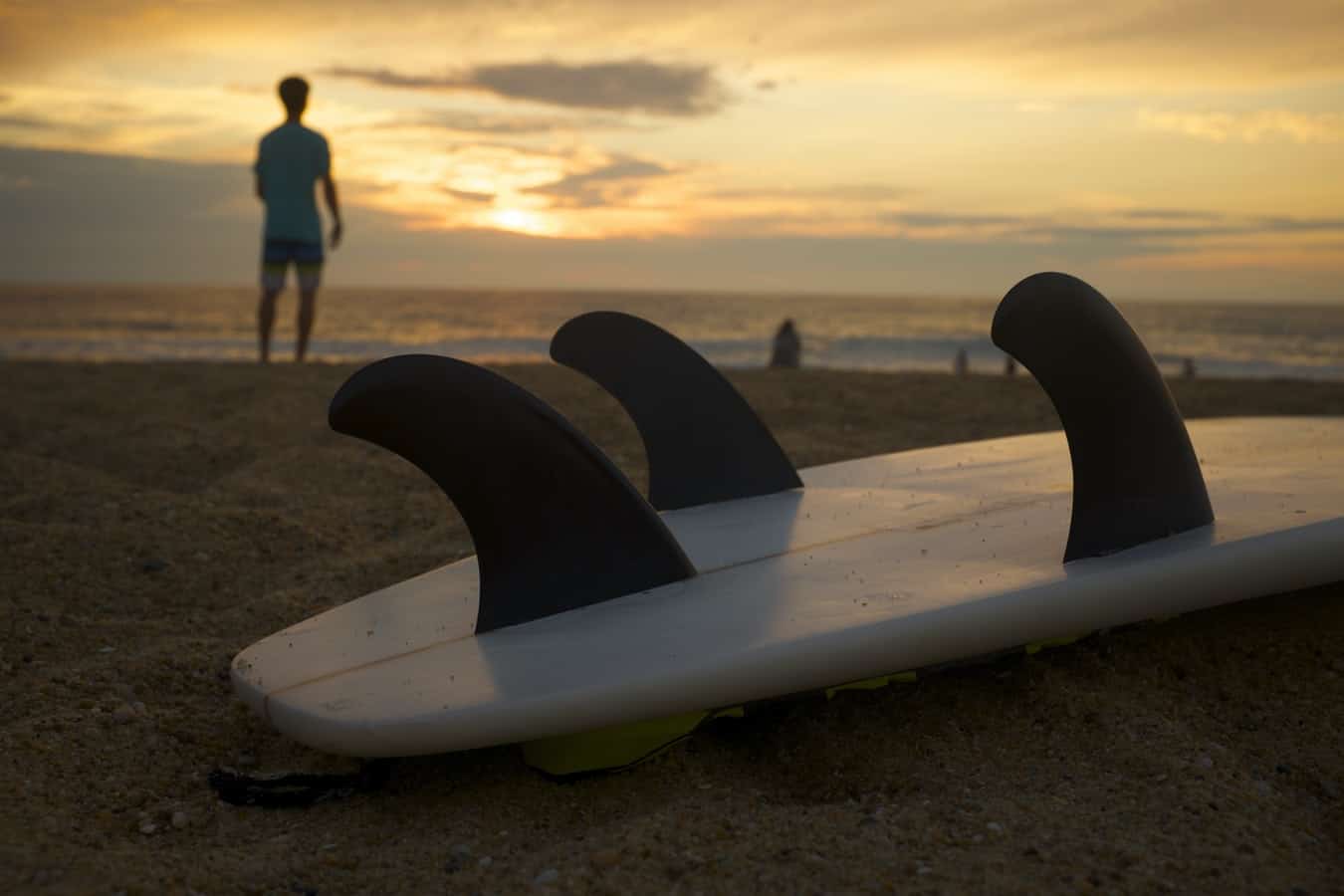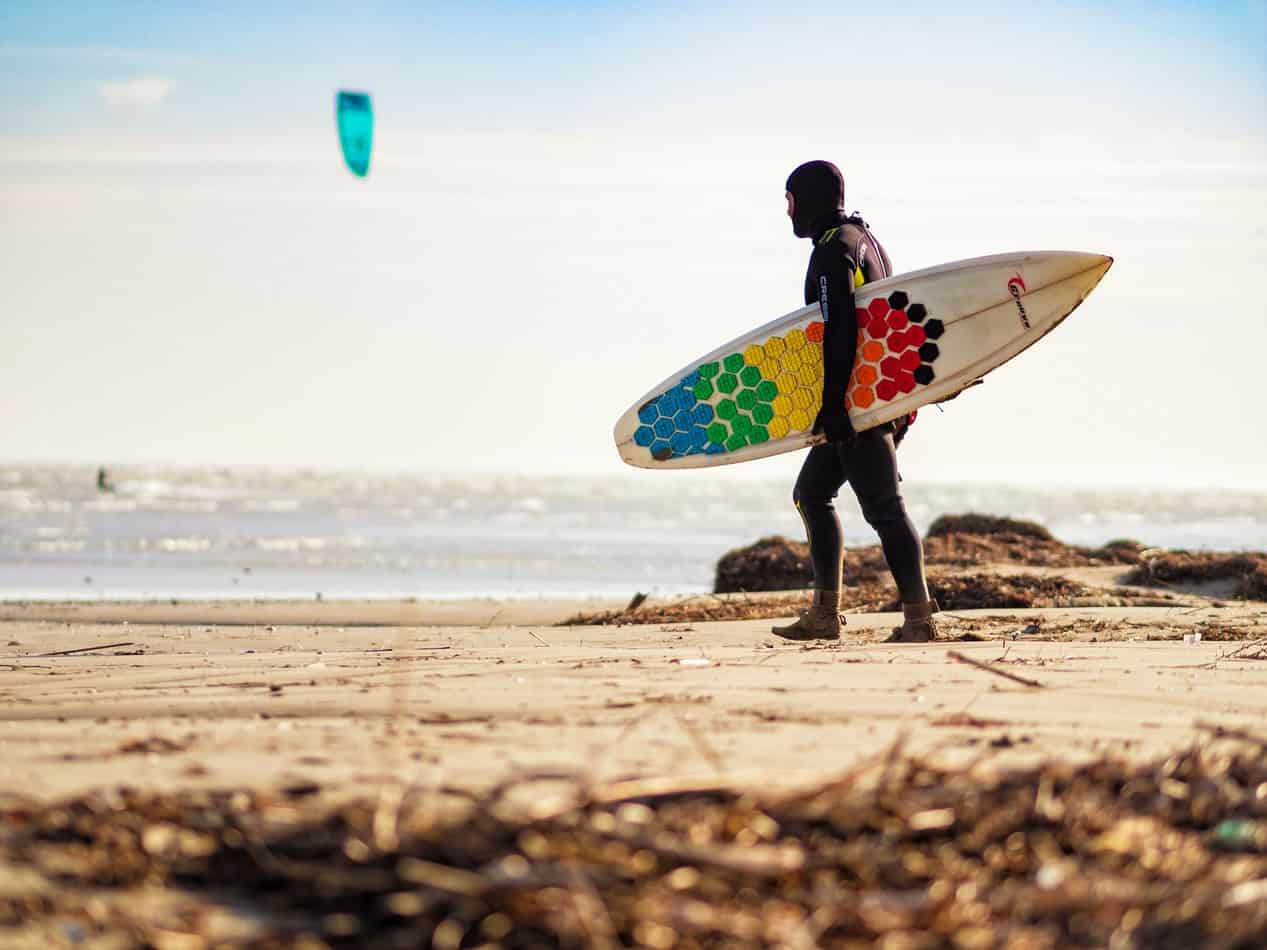When it comes to surfing, anytime you can get out on the waves is the best time. At least metaphorically.
In real life, the waves are changing hour to hour. Sometimes that’s great since it makes every ride is different, but you also need to know when the best waves are happening.
It’s a bummer to show up at your break counting on a good session, only to find choppy, crummy waves. If you’re going to get your gear together and make the drive, or maybe the walk, you want to know it’s worth it.
With the waves changing so often, how do you know when the best time of day is to go surfing? While it technically depends on the break, early morning around sunrise and late evening around sunset are agreed to be the best times to surf.
In the surfing community, sunrise is the best time to go surfing, with sunset following closely behind. As a rule of thumb, you can count on the morning and evening to have the best waves of the day.
The reason these times have the best waves is all thanks to the wind. In the early morning, the air and the water are closer to the same temperature.
This lack of temperature difference means the winds will be calmer and blowing more offshore.
As the day starts to heat up, winds become stronger and start blowing harder in an onshore direction. Then in the evening as things cool off again, the winds will die down again.
Morning is the most reliable and therefore touted as the most ideal time to surf. You can’t always count on the winds to calm down enough in the evening, but you’ll have a better chance than during the day.
If you know how to read the surf report, there are times when the waves are great during the day.
This might have to do with the tide at a specific spot or that it’s sheltered from the wind, like a cove. These are rather uncommon and rare though.
In the early morning you can count on the best waves of the day. Surfing in the early morning is such a rite of passage that it has its own name, dawn patrol.
But the wind isn’t the only reason to leave the comforts of your bed in the morning. There are plenty of bonuses to waking up with the sun and starting your day on the waves, all of which are why early morning surf is the best.
Why Morning Waves Are Best
As explained, the early morning has the calmest winds of the day making it the best time to go surfing. But what does the wind have to do with making good waves?
Well first has to do with direction. In the morning, when the air temperature and water temperature are close to the same, wind moves from the land out to sea.
This is thanks to the fact that hot air rises while cold air sinks. The cool air from the land moves in to replace the warm air rising above the water creating offshore winds.
In the afternoon when the land has heated up, the air on the shore begins to rise and the ocean air comes in to fill the space, creating onshore winds.
With an offshore direction, waves crash closer to the shore, with better shape and more power. This is due to the wind slightly slowing the force of the top of the wave, keeping it from crashing.
When winds blow onshore, the waves crash quickly without the needed power, leading to choppy unsurfable waves.
The second reason has to do with wind speed. Without wind, or with little wind, the waves are largely undisturbed and therefore have more time to form and gain power.
It also leads to a better wave period, or time between waves. So these waves will be stronger and better shaped, as well as have better spacing between them. All of this leads to greater chances of catching rideable waves.
When wind picks up, you’ll find choppier, weaker waves. Wind disrupts the surface of the water, and while that’s how waves are created out in the open ocean, when it happens close to shore, it disrupts the ones already forming.
The waves then lose momentum, break unevenly and have shorter wave periods.
A wave without power or momentum is hard, if not impossible to catch. If a wave isn’t strong enough to hold your board, it will roll right under you.
So, thanks to science, early morning consistently offers up the best waves.

Reasons to Make Dawn Patrol
Getting yourself up in the morning is tough in and of itself. Getting up at dawn to head out to a cold beach and into cold water is straight up daunting, especially if you’re a night owl. That early morning alarm is just a real buzzkill.
But when it’s for surfing, it’s worth it. You already know the morning will give you the best ride of the day, but if you need some more motivation, here’s some other reasons to make the effort.
Crowds
Morning surfing is less stressful.
If you go this early, you’ll have the water and the beach to yourself. The casual surfer will be tucked in cozy in their bed at five am on a Tuesday, leaving all the best waves to you.
The only other surfers out there will be the die hards like yourself. Without all the crowds, you can focus on catching waves instead of sitting in the lineup or watching out for beginners that don’t know the rules yet.
Then there’s the parking situation. Without the hordes of beachgoers, the most coveted parking spots will be open.
You won’t have to walk a mile from your car to reach the beach and you won’t have to drive in circles praying to the parking gods for someone to leave.
Parking at the beach can be a pain and early morning surfing relieves this extra hassle.
It’s a Great Way to Start the Day
Surfing makes an amazing start to any day. So many people rave about the benefits of a morning workout, and surfing absolutely beats an hour at the gym.
You’ll get the blood flowing and your body moving right away.
While the cold water seeping through your wetsuit may not be your favorite, it definitely gets the adrenaline pumping, waking you up way better than any cup of coffee
Not to mention the peace and quiet you can enjoy while sitting on the sand checking out the surf before you go in. As far as morning rituals go, you really can’t beat a morning surf session.
You Can Go Before Work
When you go out for dawn patrol, you can get a full session in before heading into the office.
If workdays feel like a bummer, imagine how much better it could be when you’ve spent some time out in the water before starting in on responsibilities for the day.
Sure, you can go after work, but the waves may not be as good. Besides, most of the time we’re hungry and tired after work making you way less likely to want to suit up and head to the beach.
Plus, heading in before work means more time out on the water.
Since surfing takes a lot of practice to get good, early morning surf means you have the chance to get out more often. Meaning you’ll progress faster than if you only make it on the weekends when you’re off work.
Mental Health
Exercise and nature provide awesome health benefits like reduced anxiety, and surfing is the best of both worlds. While you still can enjoy these aspects any time of day, the morning gives you an extra boost.
With empty beaches and breaks, you can enjoy the peacefulness that the ocean has to offer and enjoy the calm of the water while getting in good exercise for the day.
On top of that, early risers also enjoy lower risks of depression and other mental illness. Both make going out to surf in the early morning great for the mind.
Bragging Rights
Most importantly, when you get out in the early morning, you get the badge of honor that comes with dedication.
You’re able enjoy the pride that comes with accomplishing a goal.
It isn’t easy to wake up early, unless you’re one of those few people that wake up naturally at six am.
Unfortunately, most of us are definitely not like that, so when you make a habit of getting yourself out there before most people have had breakfast, you can have a sense of accomplishment.
Not to mention, you can tell your friends how great the waves were before they got there.
Related Questions
Is High Tide Or Low Tide Better For Surfing?
The best tide at your favorite break will depend on the bathymetry, or underwater topography of the break.
Some spots are best at low tide, some are better at high tide. The general answer is that surfing is best when the low tide is coming in to high tide.
The idea being that the tide and the waves are going in the same direction. Whereas high going to low, the tide is traveling the opposite direction of the waves colliding with them.
This hasn’t been scientifically researched but is a colloquial observation.
What Type of Wave is the Best?
Waves are categorized by the swell, groundswell and windswell. Groundswell is created far offshore while windswell is created close to shore.
Groundswell waves are considered the best for surfing. This is because of the distance they travel. By traveling from a long way off, groundswell waves are able to sort out into cleaner, more organized sets and gain momentum and power as they roll through the ocean.
Windswell doesn’t get the time to clean up and results in much choppier, weaker surf.

